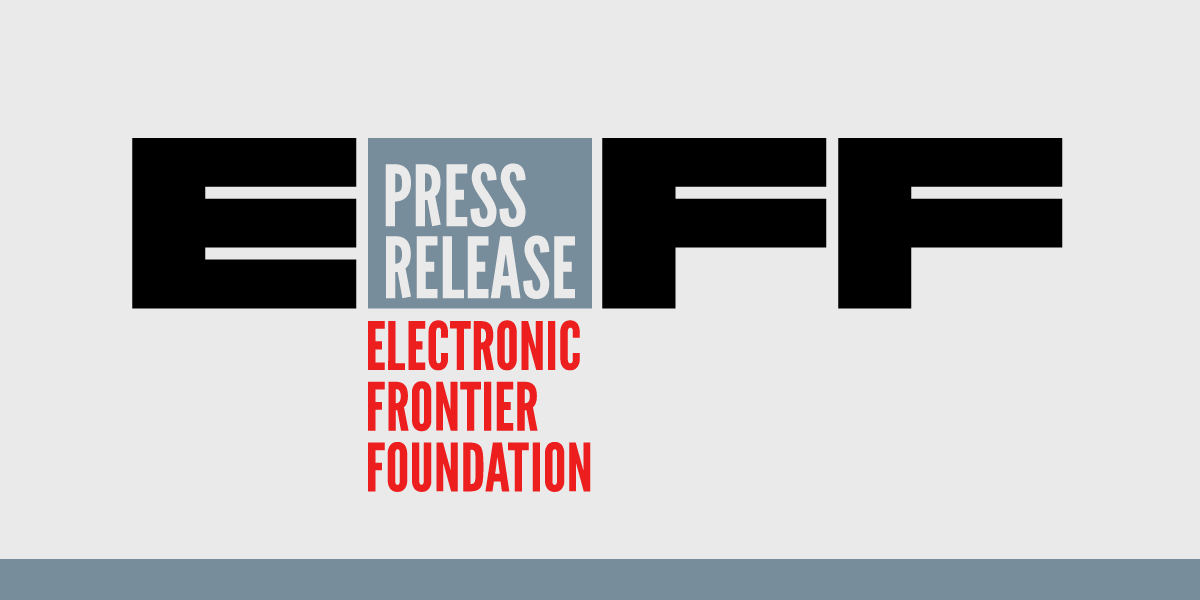WASHINGTON, DC—The Supreme Court should clarify standards for determining if the government permissibly advised or convinced social media companies to censor content from 2020 to 2022, or impermissibly coerced or threatened sites in violation of the First Amendment, the Electronic Frontier Foundation (EFF) said in a brief filed today.
“Government co-option of content moderation systems is a serious threat to freedom of speech,” said EFF Civil Liberties Director David Greene. “But there are clearly times when it is permissible, appropriate, and even good public policy for government agencies and officials to inform, communicate with, attempt to persuade, or even criticize sites—free of coercion—about the user speech they publish.”
In Murthy v. Missouri, Louisiana, Missouri, and several individuals have accused federal agencies and officials of illegal “jawboning”—urging private persons and entities to censor another’s speech. The suit alleges agencies pushed the platforms to censor content about COVID safety measures and vaccines, elections, and Hunter Biden’s laptop, among other issues.
In a brief filed today with the Center for Democracy and Technology (CDT), EFF urged the court to rely on the First Amendment test in its 1963 Bantam Books v. Sullivan ruling to determine whether the government contacts were permissible or impermissible. The test says the Constitution bans not only direct government demands for censorship, but also indirect means, like hinting at legal sanctions to intimidate or coerce a private party into censorship.
In Bantam, book publishers sued a Rhode Island commission which—in an attempt to suppress “obscene” material—used threats of state prosecution to keep books considered “objectional” from being distributed. The commission’s actions amounted to informal censorship, the court found. But the test also recognizes that not every communication to an intermediary about users’ speech is unconstitutional.
Courts must look at all factors, including whether the contacts are from law enforcement, convey coercion or threats of adverse consequences, or were solicited to gain the government’s input or expertise, EFF and CDT said in their brief. The Supreme Court should provide adequate guidance to help courts, agencies, and private parties distinguish between attempts to convince and attempts to coerce.
In the Murthy case, a federal judge sided with the states and issued an injunction limiting government contacts with social media platforms. The U.S. Court of Appeals for the Fifth Circuit partially upheld the injunction. Neither court adequately distinguished between improper and proper communications, EFF and CDT said in their brief.
“This court must independently review the record and make the searching distinctions that the lower courts did not,” said Greene.
Kate Ruane, Director of CDT’s Free Expression Project, agreed that “lower courts’ sweeping opinions in Murthy have made the line between permissible government attempts to persuade social media platforms and unconstitutional coercion less clear than ever.”
“We’re asking the Supreme Court to clarify when and how the government can appropriately communicate with platforms while protecting speech, which would allow useful information-sharing to resume, and encourage accountability and transparency in government-platform interactions,” said Ruane.
For the brief: https://www.eff.org/document/murthy-v-missouri-amicus-brief
For EFF’s earlier brief to the Fifth Circuit appeals court: https://www.eff.org/document/missouri-v-biden-amicus-brief
For more on Murthy v. Missouri: https://www.scotusblog.com/case-files/cases/murthy-v-missouri-2/



